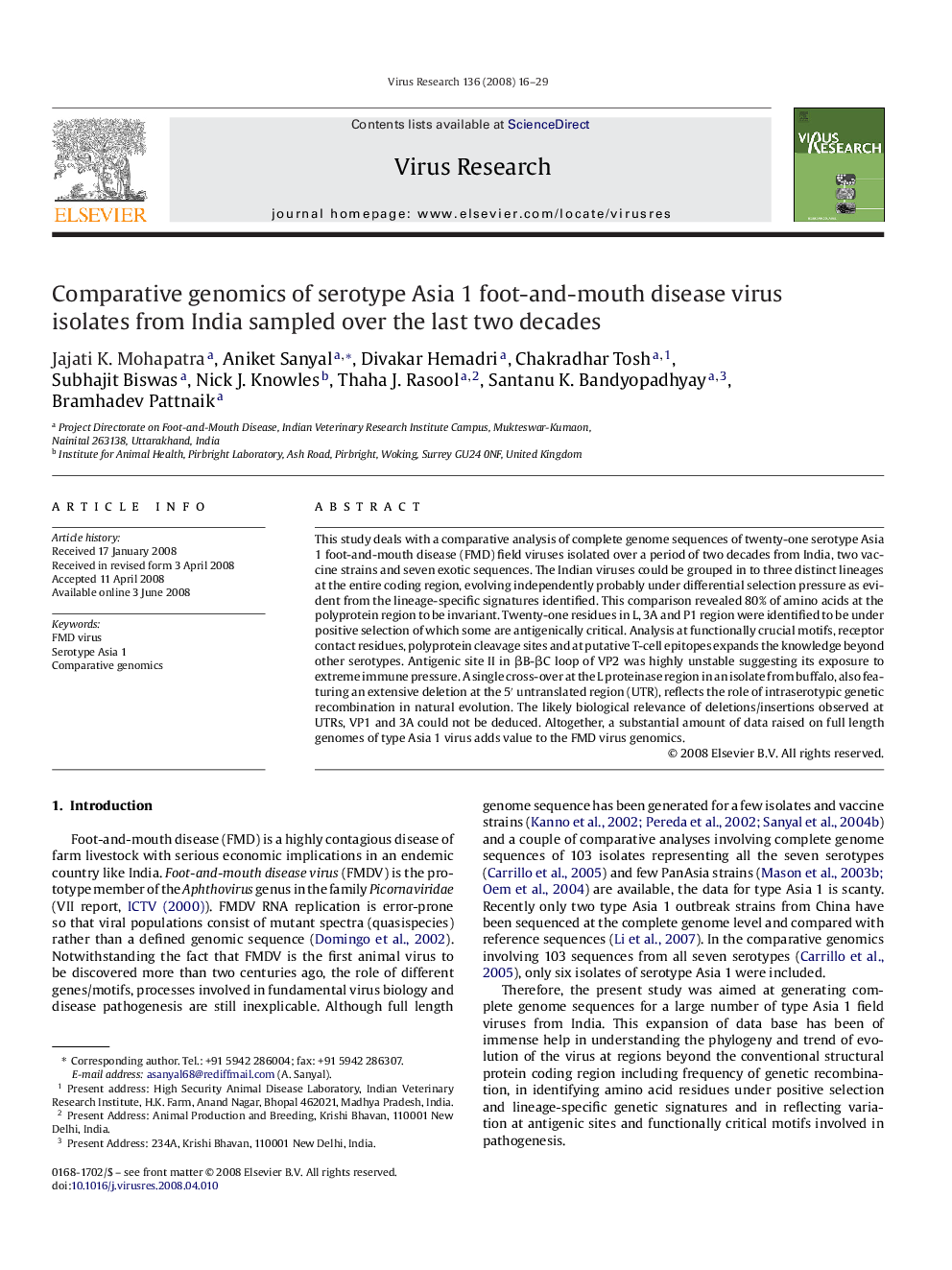| Article ID | Journal | Published Year | Pages | File Type |
|---|---|---|---|---|
| 3430454 | Virus Research | 2008 | 14 Pages |
This study deals with a comparative analysis of complete genome sequences of twenty-one serotype Asia 1 foot-and-mouth disease (FMD) field viruses isolated over a period of two decades from India, two vaccine strains and seven exotic sequences. The Indian viruses could be grouped in to three distinct lineages at the entire coding region, evolving independently probably under differential selection pressure as evident from the lineage-specific signatures identified. This comparison revealed 80% of amino acids at the polyprotein region to be invariant. Twenty-one residues in L, 3A and P1 region were identified to be under positive selection of which some are antigenically critical. Analysis at functionally crucial motifs, receptor contact residues, polyprotein cleavage sites and at putative T-cell epitopes expands the knowledge beyond other serotypes. Antigenic site II in βB-βC loop of VP2 was highly unstable suggesting its exposure to extreme immune pressure. A single cross-over at the L proteinase region in an isolate from buffalo, also featuring an extensive deletion at the 5′ untranslated region (UTR), reflects the role of intraserotypic genetic recombination in natural evolution. The likely biological relevance of deletions/insertions observed at UTRs, VP1 and 3A could not be deduced. Altogether, a substantial amount of data raised on full length genomes of type Asia 1 virus adds value to the FMD virus genomics.
